The new Medical Devices Rules, 2017 seek to remove regulatory bottlenecks to make in India, facilitate ease of doing business while ensuring availability of better medical devices for patient care and safety. The rules will also regulate a much larger set of medical devices under a framework customized for medical devices. The stakeholders are hoping that the system will be industry friendly and will indeed create an ecosystem that will enable to boost medical technology innovation and manufacturing in the country.

On January 31, 2017 the Ministry of Health and Family Welfare has notified Medical Devices Rules, 2017. The new Rules have been framed in conformity with Global Harmonisation Task Force (GHTF) framework and conform to best international practices. The rules will come in to force with effect from January 1, 2018. Only 15 categories of medical devices are, at present, regulated as drugs and to that extent, the current regulatory practices in India were not fully geared to meet the requirements of medical devices sector in the country.
Medical devices will, under the new Rules, be classified as per GHTF practice, based on associated risks, into Class A (low risk), Class B (low moderate risk), Class C (moderate high risk) and Class D (high risk). The manufacturers of medical devices will be required to meet risk proportionate regulatory requirements that have been specified in the Rules and are based on best international practices.
With a view to bring in the highest degree of professionalism in regulation of medical devices, a system of ‘Third Party Conformity Assessment and Certification’ through Notified Bodies is envisaged. The Notified Bodies will be accredited by the National Accreditation Board for Certification Bodies (NABCB). The NABCB will, before accrediting Notified Bodies, assess their competence in terms of required human resources and other requirements. These Bodies will undertake verification and assessment of Quality Management System of Medical Device Manufacturers of Class A and Class B category and may, on as required basis, be called upon to render assistance for regulation of Class C and D medical devices also.
This story is from the {{IssueName}} edition of {{MagazineName}}.
Start your 7-day Magzter GOLD free trial to access thousands of curated premium stories, and 9,000+ magazines and newspapers.
Already a subscriber ? Sign In
This story is from the {{IssueName}} edition of {{MagazineName}}.
Start your 7-day Magzter GOLD free trial to access thousands of curated premium stories, and 9,000+ magazines and newspapers.
Already a subscriber? Sign In

Early Diabetic Retinopathy Detection Remains a Challenge
The Vitreo Retinal Society of India (VRSI) and the Research Society for the Study of Diabetes in India (RSSDI) have formulated a first-of-its kind diabetic retinopathy (DR) screening guideline to help physicians and diabetologists in India educate their patients about DR.

Promega unveils GloMax Galaxy Bioluminescence Imager for illuminating protein dynamics in real time
US-based Promega Corporation, a life-sciences research partner dedicated to providing intuitive tools that empower scientists to innovate, has unveiled the new GloMax Galaxy Bioluminescence Imager.
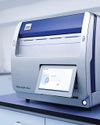
Qiagen launches QIAcuityDx digital PCR system for clinical testing in oncology
Qiagen N.V. has announced the launch of the QIAcuityDx Digital PCR System, a pivotal addition to its digital PCR portfolio now expanding into clinical diagnostics.
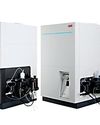
Thermo Fisher introduces iCAP MX Series ICP-MS to simplify trace elemental analysis
Thermo Fisher Scientific Inc. has launched the Thermo Scientific iCAP MX Series ICP-MS to simplify trace element analysis with inductively coupled plasma mass spectrometry (ICP-MS).

Singleron, Bioscreen to enhance access to single cell multi-omics solutions for Indian researchers
Singleron Biotechnologies, a leading innovator in single cell multi-omics solutions, has announced a strategic partnership with Bioscreen, a renowned distributor of advanced life science products in India.
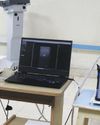
IIT Madras identifies enhanced drug delivery method for eye treatments
Researchers at the Indian Institute of Technology Madras (IIT-M) have demonstrated how drugs injected in the human eye can be better delivered to the target region through ‘convection caused by mild laser heating’.
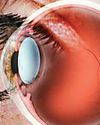
IIT Madras develops indigenous POCUS scanner for sports injury diagnosis
A team of researchers at the Indian Institute of Technology Madras (IIT-M) has developed an indigenous portable Point-of-Care-Ultrasound (POCUS) Scanner for sports injury diagnosis and management.

Practo strengthens Board with appointment of TVG Krishnamurthy and Dr Alexander Kuruvilla
Practo has appointed two new directors to its board: TVG Krishnamurthy and Dr Alexander Kuruvilla.
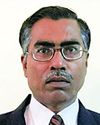
Dr R N Gupta steps in as National President of Indian Pharmaceutical Association
Dr R N Gupta has been elected as the National President of the Indian Pharmaceutical Association (IPA), the oldest and largest association of pharmaceutical professionals in the country, for the term 2024 - 2026 (October 1, 2024 - September 30, 2026).
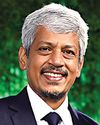
QR678 brings medtech leader Sridhar Ranganathan to advisory board
QR678, a pioneering company dedicated to revolutionising hair and skin science through groundbreaking research and innovative solutions, has announced the appointment of Sridhar Ranganathan to its Board of Advisors.